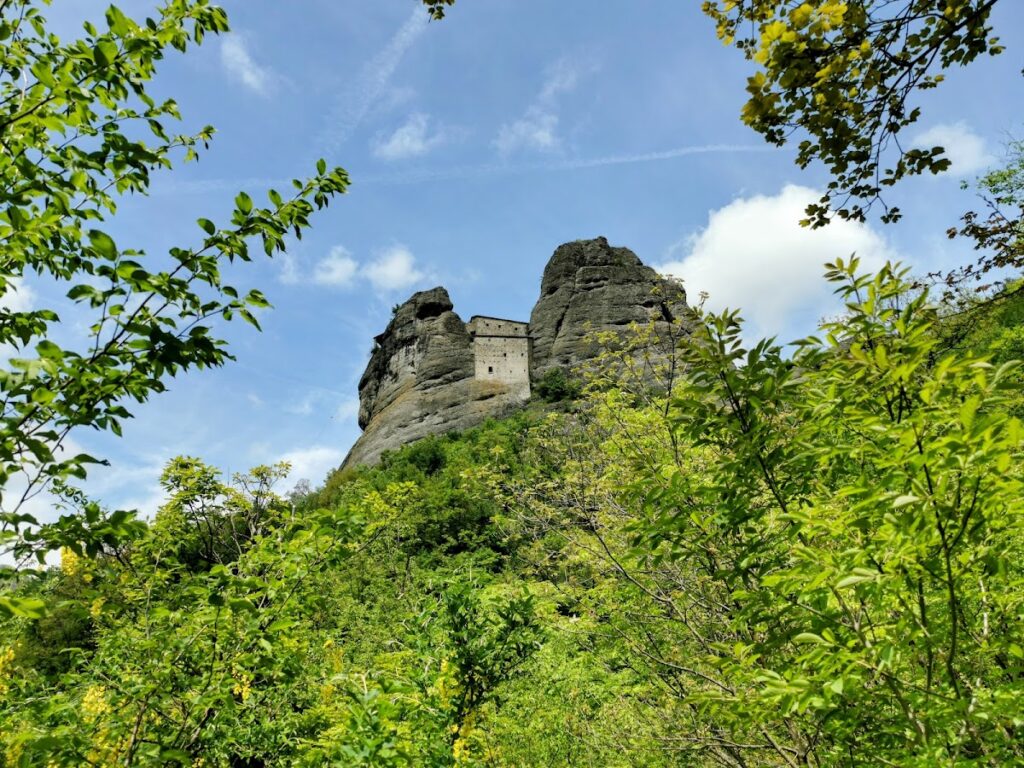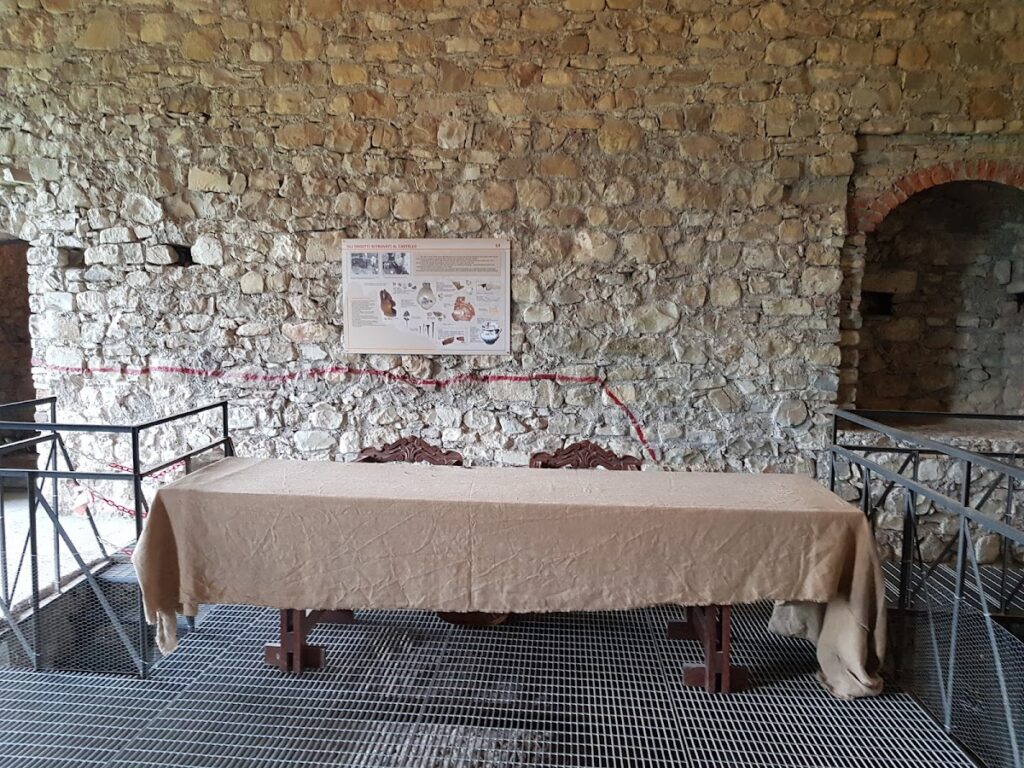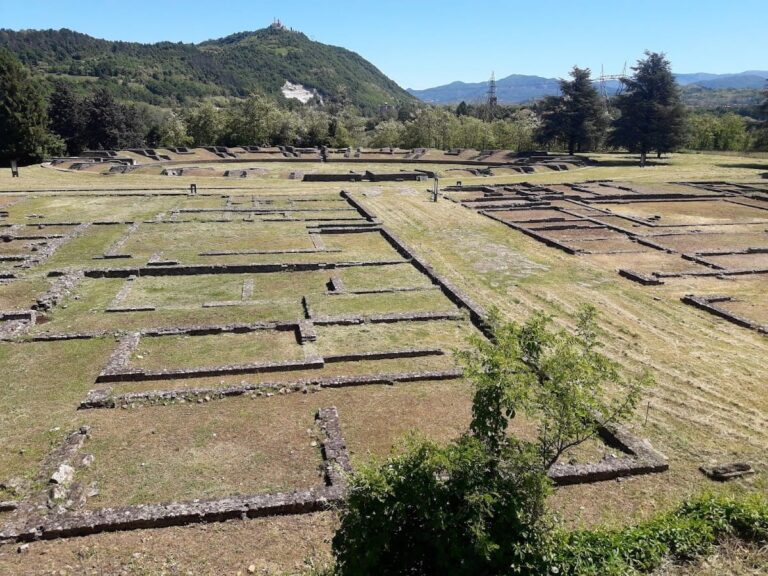Castello della Pietra: A Medieval Fortress in Vobbia, Italy
Visitor Information
Google Rating: 4.7
Popularity: Low
Country: Italy
Civilization: Unclassified
Site type: Military
Remains: Castle
History
The Castello della Pietra is a medieval fortress located in the municipality of Vobbia, Italy. It was constructed by the local rulers or feudal lords of the region, with origins that most scholars date to the 12th century or possibly earlier.
The earliest documented reference to the castle comes from the mid-13th century. In 1252, records mention a feudal lord named Opizzone della Pietra, whose surname appears to be linked directly to the castle itself. During this period, the fortress had authority over the surrounding area, including the Alta Val Borbera beyond the San Fermo hill, indicating its role as a regional administrative and defensive center. The medieval chronicler Caffaro di Rustico da Caschifellone noted that the castle’s 13th-century structure closely resembles what remains today, showing few major changes in its basic form since that era.
Following the death of Guglielmo della Pietra, ownership of the castle passed to the Spinola family, an influential noble house connected to Genoa. This lineage maintained control until the early 16th century when, by a will dated June 7, 1518, Tolomeo Spinola transferred the castle to the Adorno family. Prospero Adorno formally received the property in 1565, and by 1575 the fortress was held by his brother Girolamo Adorno.
In 1579, the castle briefly fell into the hands of bandits but was swiftly recaptured by Giorgio Centurione acting under the authority of the Genoese Senate. This episode underscores the fortress’s continuing strategic importance even late into the Renaissance period. By 1620, the castle experienced a shift in sovereignty when Emperor Matthias of the Habsburg dynasty integrated it into the Pallavicino fiefdom in Val Borbera. This change reduced its former autonomy but allowed it to remain a semi-independent enclave up until the late 1700s.
Throughout its history, the domain governed from the Castello della Pietra extended to nearby localities such as Torre di Vobbia, Pareto in Val Brevenna, and Gordena in Alta Val Borbera. The estate eventually came under the ownership of the Botta Adorno family. The political upheavals associated with the French Revolutionary Wars reached the castle in 1797 when French forces entered the region. Subsequently, following Napoleon Bonaparte’s directive to abolish imperial fiefs, the fortress lost its feudal status. Its final proprietor, Michele Bisio, abandoned the castle, which was set ablaze shortly afterward, resulting in significant damage.
After the destruction, the castle’s bronze cannons were repurposed by the Bishop of Tortona to fashion bells for the Santa Croce church in Crocefieschi, tying the site symbolically to local religious life. Ownership of the ruins remained with the Botta Adorno family until 1882, when the property transferred to the Cusani Visconti family. It was eventually sold in 1919 to Giovanni Battista Beroldo, whose descendants donated it to the Municipality of Vobbia in 1979, paving the way for preservation and study.
Remains
The Castello della Pietra occupies a naturally defensible position on a rocky outcrop between two steep spurs composed of conglomerate stone. Its placement afforded protection by exploiting the rugged terrain, overlooking the road running beside the Vobbia stream. The fortress’s layout comprises two principal sections arranged on different levels of elevation, highlighting a strategic use of the uneven landscape.
Entry to the site occurs through the lower section known as the forepart, a three-story structure that has been stabilized and features modern metal grid flooring to allow foot traffic. This forepart leads upward to a central hall with a square footprint capped by a vaulted ceiling, which remains accessible to visitors. Above this area, restoration work has reestablished a roof that includes an attic space, connected both to the central hall and a battlement walkway, hinting at both residential and defense functions within the castle’s design.
A significant engineering element supporting the castle’s self-sufficiency is a large cistern carved directly into the bedrock beneath what is known as the “torrione,” the western natural rock spur. This cistern was designed to collect rainwater channeled from the fortress’s roofs through grooves hewn into the stone—a system partially preserved and visible today. Such installations were crucial for sustaining occupants during sieges or dry periods. A second, smaller cistern lies below the floor of the central hall, further indicating careful water management.
The construction reflects typical medieval stone masonry techniques consistent with military fortifications of the period, and while much of the structure remains in a ruinous state, consolidation efforts have secured the standing walls and key features from further decay. Archaeological investigations conducted alongside restoration have emphasized understanding the building phases and defensive capabilities of the site, confirming that despite the centuries of decline, the castle retains its original spatial organization and defensive character.
Overall, the ruins making up Castello della Pietra present a vivid example of a medieval hillside fortress adapted to its natural surroundings, preserving both residential and military components intrinsic to its historical function as a regional stronghold.










